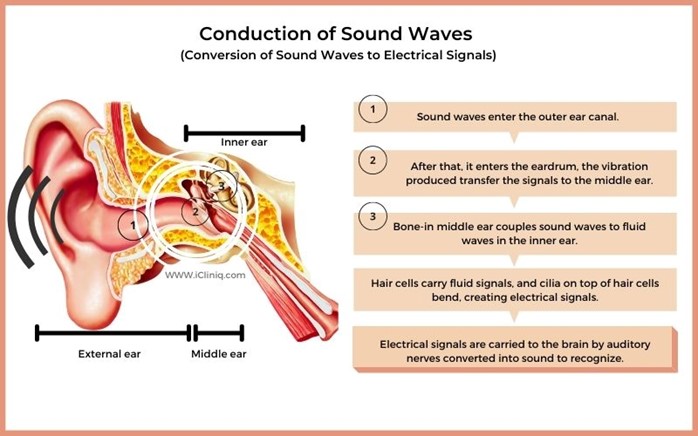The caregiver of an elderly client asks the nurse what can be done about the chronic bilateral inflammation of the eyelid margins that keeps recurring. Which of the following is the information that the nurse will provide?
Instill eye drops in both eyes every hour around the clock
Use sterile gloves when assisting with activities of daily living
Use baby shampoo on the eyelid margins
Use a salt scrub inside the eyelid
The Correct Answer is C
Choice A Reason: This choice is incorrect. Instilling eye drops in both eyes every hour around the clock is not an information that the nurse will provide, as it is not a recommended treatment for chronic bilateral inflammation of the eyelid margins. This condition is also known as blepharitis, which is a common and chronic disorder that causes redness, itching, burning, and crusting of the eyelids. Eye drops may be used to relieve symptoms, but not every hour or without a prescription.
Choice B Reason: This choice is incorrect. Using sterile gloves when assisting with activities of daily living is not an information that the nurse will provide, as it is not a necessary precaution for chronic bilateral inflammation of the eyelid margins. Blepharitis is not contagious or infectious, but rather caused by an overgrowth of bacteria or mites on the eyelids, or by an underlying skin condition such as seborrheic dermatitis or rosacea.
Choice C Reason: This is the correct choice. Using baby shampoo on the eyelid margins is an information that the nurse will provide, as it is a simple and effective way to clean and soothe the eyelids. Baby shampoo is gentle and non-irritating, and can help remove excess oil, debris, and scales from the eyelids. The nurse will instruct the caregiver to dilute a few drops of baby shampoo with warm water, apply it to a cotton ball or washcloth, and gently rub it along the eyelid margins. The nurse will also advise to rinse well with water and pat dry with a clean towel.
Choice D Reason: This choice is incorrect. Using a salt scrub inside the eyelid is not an information that the nurse will provide, as it is a harmful and painful method that can damage and irritate the eye. Salt scrub is abrasive and drying, and can cause corneal abrasion, infection, or inflammation. The nurse will warn the caregiver to avoid using any harsh or unapproved products on or near the eye.
Nursing Test Bank
Naxlex Comprehensive Predictor Exams
Related Questions
Correct Answer is C
Explanation
Choice A reason: This is incorrect because using sign language when communicating with the client is not an appropriate action for the nurse to take. Sign language is a form of communication that uses hand gestures, facial expressions, and body movements. It is not a universal language and requires training and practice. The nurse should not assume that the client knows or prefers sign language unless they have indicated so.
Choice B reason: This is incorrect because speaking loudly and into the client's good ear is not an appropriate action for the nurse to take. Speaking loudly can distort the sound quality and cause discomfort or irritation to the client. Speaking into the client's good ear can also create a sense of imbalance and isolation. The nurse should speak at a normal volume and tone, and face the client directly.
Choice C reason: This is the correct answer because speaking directly to the client in a normal, clear voice is an appropriate action for the nurse to take. Speaking directly to the client can help them see the nurse's mouth movements and facial expressions, which can enhance understanding and communication. Speaking in a normal, clear voice can help convey the message clearly and respectfully.
Choice D reason: This is incorrect because sitting by the client's side and speaking very slowly is not an appropriate action for the nurse to take. Sitting by the client's side can make it difficult for them to see the nurse's face and hear their voice. Speaking very slowly can also make the message unclear and patronizing. The nurse should sit in front of the client and speak at a normal pace.

Correct Answer is B
Explanation
Choice A Reason: Depth perception is the ability to judge the distance and position of objects in three-dimensional space. Depth perception is assessed by asking the client to touch the tip of a pen or pencil held by the nurse, or by using a stereopsis test.
Choice B Reason: Peripheral vision is the ability to see objects and movements outside the direct line of vision. Peripheral vision is assessed by asking the client to shake the hand of the nurse, who stands at an angle to the client's side, or by using a confrontation test.
Choice C Reason: Color deficit is the inability to distinguish certain colors or shades of colors. Color deficit is assessed by asking the client to identify numbers or shapes on a color plate test, such as the Ishihara test.
Choice D Reason: Double vision is the perception of two images of a single object. Double vision is assessed by asking the client to cover one eye and look at an object, then switch eyes and compare the images, or by using a cover-uncover test.
Whether you are a student looking to ace your exams or a practicing nurse seeking to enhance your expertise , our nursing education contents will empower you with the confidence and competence to make a difference in the lives of patients and become a respected leader in the healthcare field.
Visit Naxlex, invest in your future and unlock endless possibilities with our unparalleled nursing education contents today
Report Wrong Answer on the Current Question
Do you disagree with the answer? If yes, what is your expected answer? Explain.
Kindly be descriptive with the issue you are facing.
